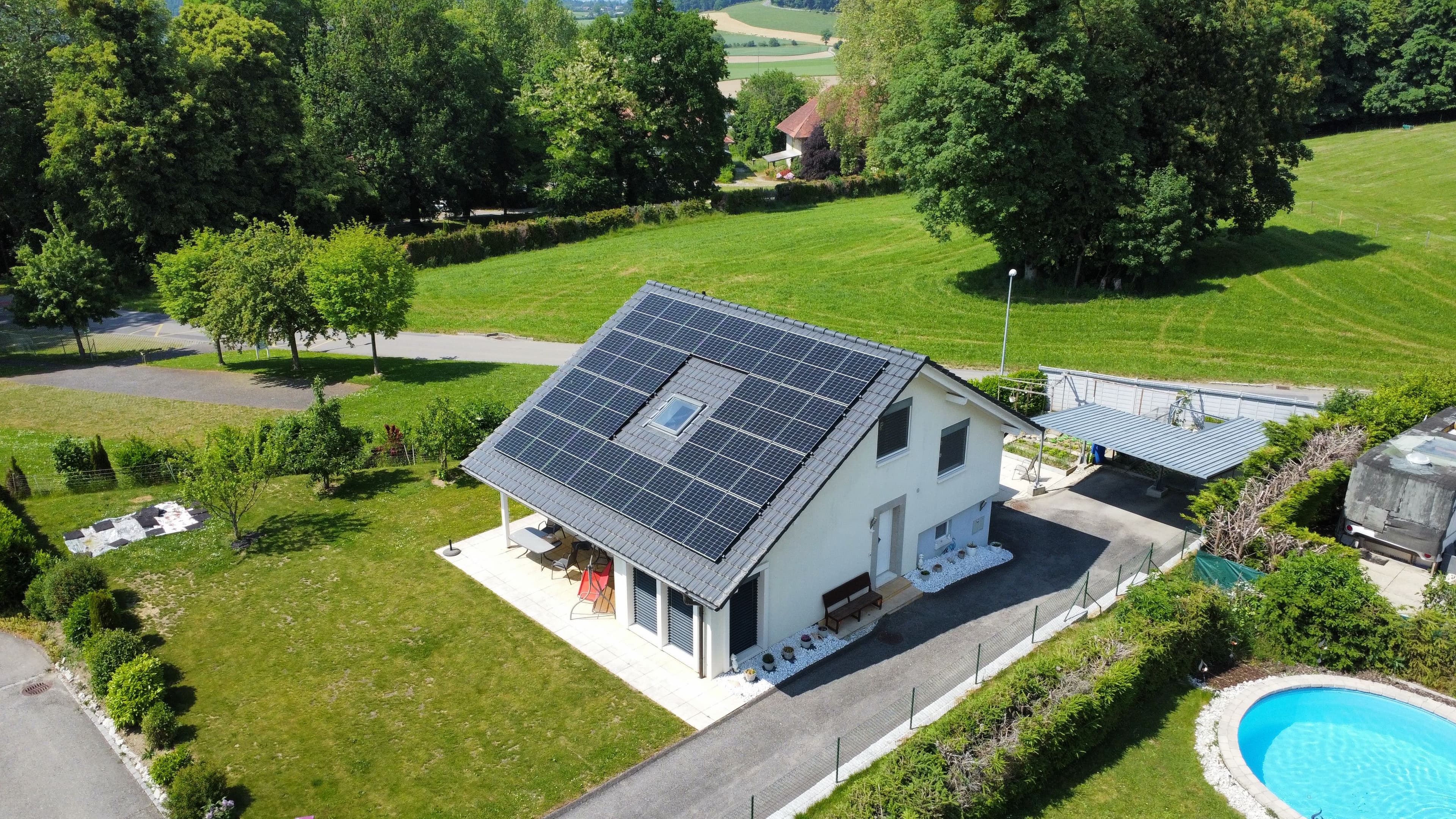The Swiss Energy Foundation (SES) commissioned a study to examine the demand, potential, and implementation of photovoltaics in Switzerland and to make specific suggestions on how to promote it in order to manage the envisioned energy transition. We have summarized the study and its conclusions for you.
1. Why this study
In 2017, Switzerland voted in favor of an energy transition by 2050, meaning the country must be climate-neutral by then. Not only must the electricity currently provided by nuclear power plants be replaced, but it is also assumed that the demand for electricity will increase as we move away from fossil fuels. Photovoltaic systems play a central role here, as the expansion potential of hydroelectricity is very limited and the development of other sustainable technologies in Switzerland is progressing slowly. The purpose of the study was to determine what needs to be done to achieve the energy transition by 2050 through solar energy.
Here are their conclusions and resulting implementation suggestions.
2. Conclusions
Needs
By 2050, depending on assumed growth figures, between 31.1 and 43.66 TWh of additional electricity will need to be generated from solar energy for the entire Switzerland to be sustainably powered. Currently, only 2.4 TWh is generated by solar energy, covering approximately 0.8% of local electricity demand (2019).
Potential
After examining various studies and calculations on potential, the report concluded that with all suitable Swiss rooftops, approximately 24.5 TWh per year could be generated by 2050. If facade areas are included, even up to 33 TWh per year. An additional 10.3 TWh could be added from solar systems on infrastructures (roads, parking lots, highway embankments), as well as an extra 3.3 TWh from open spaces.
Comparison of Needs and Potential
Depending on how the needs are calculated, areas suitable for solar energy production are either barely sufficient or barely insufficient. However, the calculation was made with annual balances that do not take into account seasonal fluctuations. It is therefore assumed that either electricity storage or the expansion of wind farms is necessary to keep Switzerland climate-neutral during the winter months.
Comparison of current electricity demand (57 TWh per year) and in 2050 (85-97 TWh). As the expansion potential of hydroelectricity is limited (to 9 TWh), between 31.1 and 43.66 TWh of solar energy must be generated per year. Its maximum expansion potential is 24.8 TWh, and thus, depending on assumed growth figures, either higher or lower than demand.
Implementation
In order to cover the necessary electrical demand, almost all suitable Swiss roof and facade surfaces must be equipped with solar modules for each calculation model. The next question for the study is therefore how this can be achieved.
Costs
Various sources have shown that the costs of solar systems decrease by 3% per year.
Employment
To install the necessary solar systems to cover all additional electricity, more than 14,000 jobs must be created in the next 4 to 5 years. Most of these jobs are in assembly, with a smaller part involved in planning.
Policy Measures
In order to keep uninhabited areas (e.g., the Alps) as free as possible from solar modules, as much surface as possible on buildings and infrastructure must be utilized.
However, if no incentives are created to develop solar energy, only 12.7 TWh of solar systems can be provided by 2050.
All financing measures currently being negotiated by the government (note from Younergy, see here the communication from the Swiss Federal Council on the Swiss Energy Act 2021) must therefore be implemented.
Additionally, consideration could be given to charging all property owners who have good and very good use of building space if they do not have a solar system installed.
Furthermore, cantons could be tasked with creating or promoting solar systems within their borders. How much could depend on the canton's area or population. Cantons that do not meet their solar energy production targets must either pay fines to the federal government or purchase certificates from cantons that produce more solar energy than needed.



